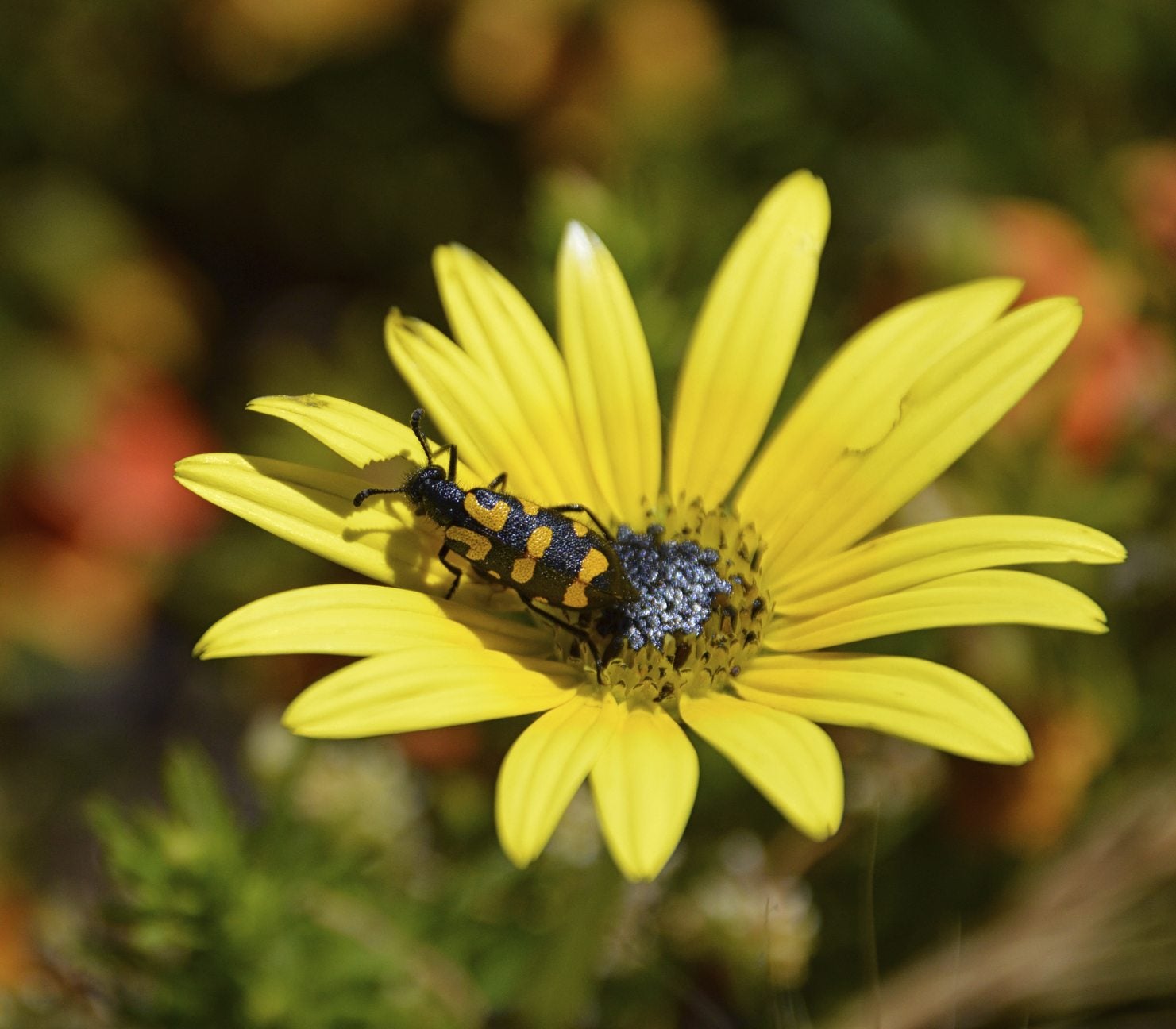What Are Blister Beetles: Is Blister Beetle A Pest Or Beneficial


When you kill a blister beetle by crushing it against your skin, a poison in the beetle's body causes a painful blister. The blisters are only the beginning of the many problems that blister beetles cause. In this article you'll learn about blister beetle control.
What are Blister Beetles?
The aptly named blister beetles measure one-half to one inch (1.5 to 2.5 cm.) long. They are often colorful with bright stripes running lengthwise along the body. The adult form of these skinny, long-legged insects feeds on plants while the larvae feed on the larvae of other insects. There are over 2,500 species of blister beetles around the world, and their colors and markings vary quite a bit. One thing that they all have in common is that they contain a toxin called cantharidin. The toxin is stable long after the beetle dies, and it can kill livestock and horses when consumed in their hay or feed.
Blister Beetle Information
Is blister beetle a pest or beneficial insect? Blister beetles have one redeeming quality: Their larvae kill grasshopper larvae. The beetles lay masses of eggs in the soil where grasshoppers deposit their egg pods. The blister beetles hatch first, and immediately begin searching for the grasshopper eggs. These feeding habits can prevent generations of grasshoppers from maturing. Even so, this isn't a good reason to encourage blister beetles because the adults will do a great deal of harm to plants and animals. It's best to find another way to deal with the grasshoppers. Blister beetles also kill wild bee larvae and rob the hive of provisions. Wild bees are important plant pollinators. In fact, some studies show that they are even better pollinators than honeybees. With the scarcity of pollinators we are facing these days, we should do everything we can to remove blister beetles from the wild bee's habitat.
Controlling Blister Beetles in Gardens
Adult blister beetles feed on the leaves at the top of garden plants. They are attracted to flowers where they eat the pollen and drink the nectar. The beetles feed on a wide variety of vegetable and ornamental plants. You may see blister beetles swarming in gardens around midsummer. Handpicking is a good way to control the beetles, but wear gloves to protect yourself from the toxin. Knock them into a container of soapy water where they will die, or shake a stem over a pan of soapy water. They like to fall to the ground and play dead when disturbed, and they'll soon find their way back to the plant if you don't make sure they land in the soapy water. Spraying them with spinosad is safe and effective too. The spray must come in contact with the beetle's body, so you may have to spray a few times.
Sign up for the Gardening Know How newsletter today and receive a free copy of our e-book "How to Grow Delicious Tomatoes".

Jackie Carroll has written over 500 articles for Gardening Know How on a wide range of topics.